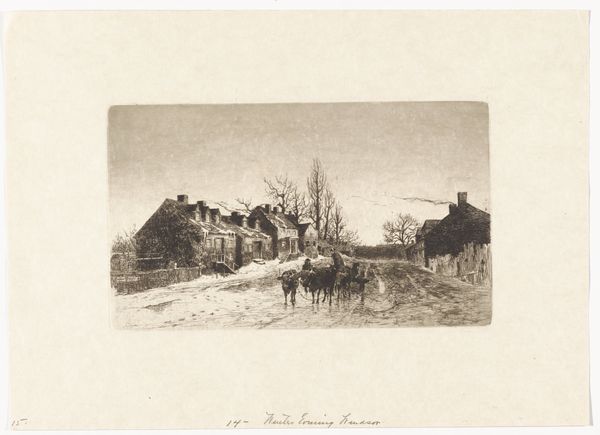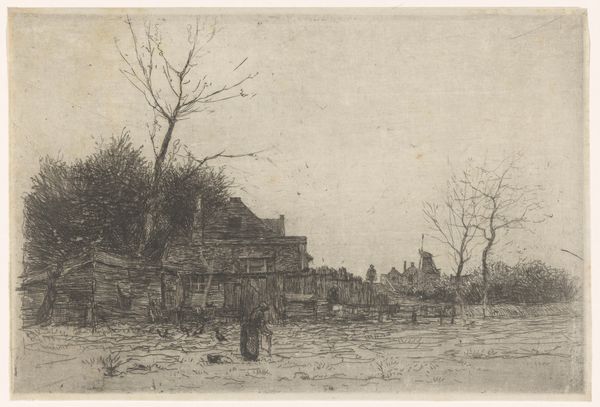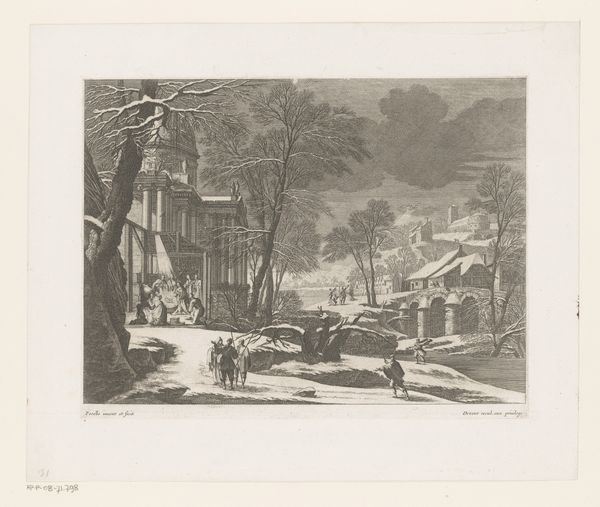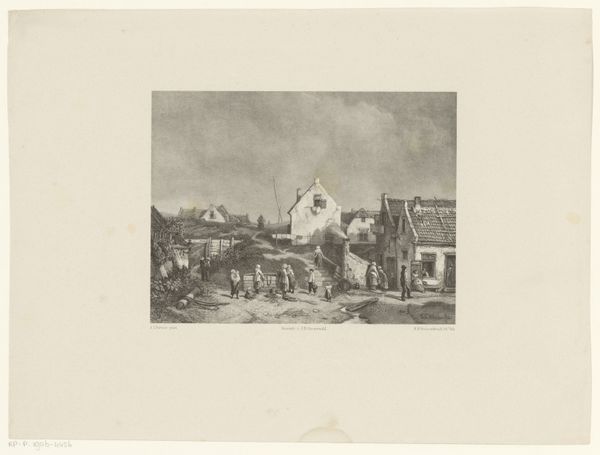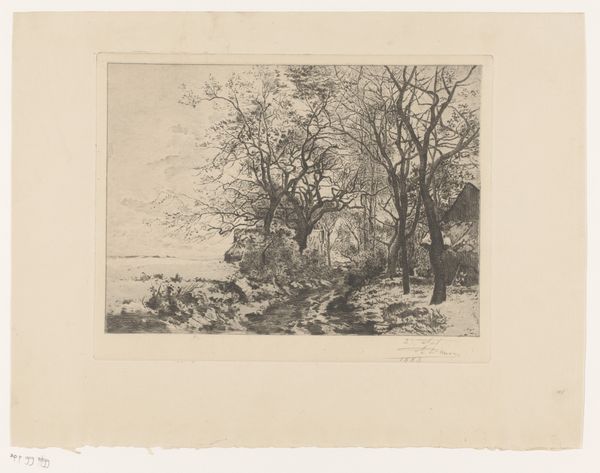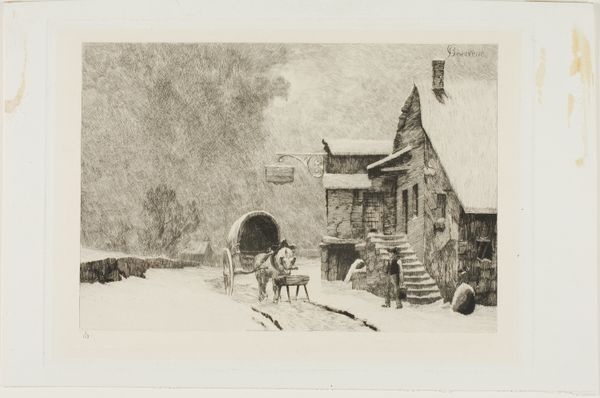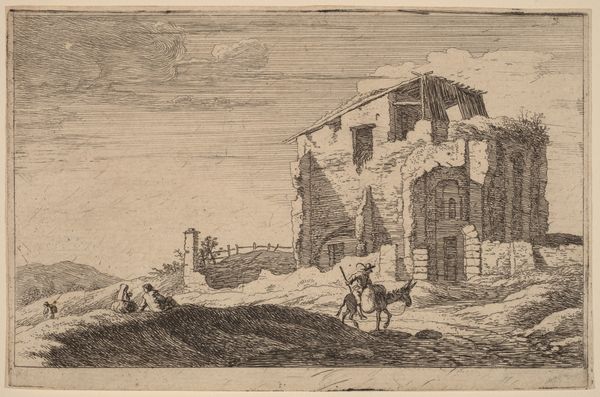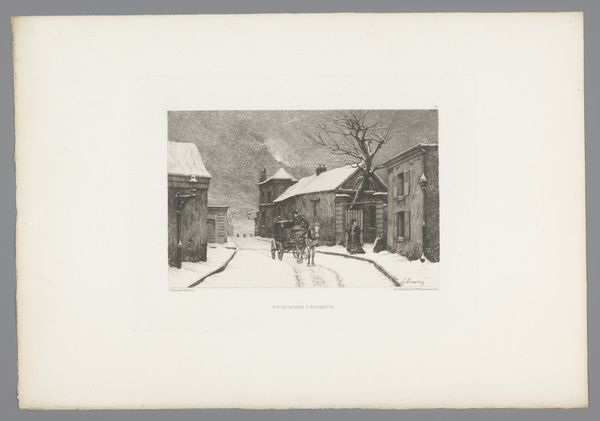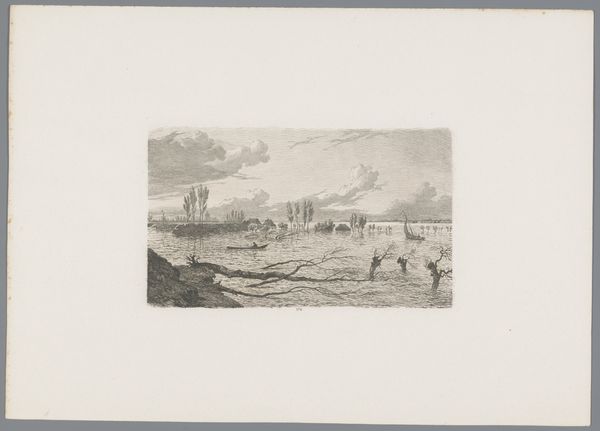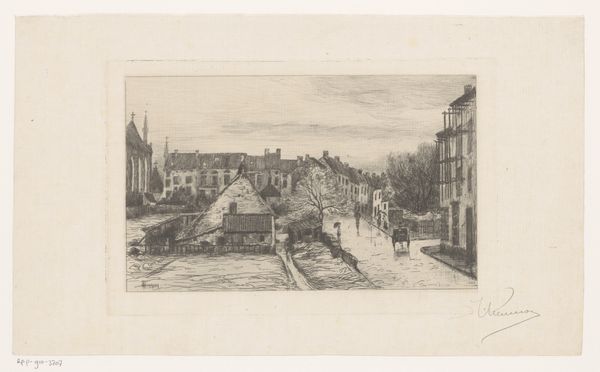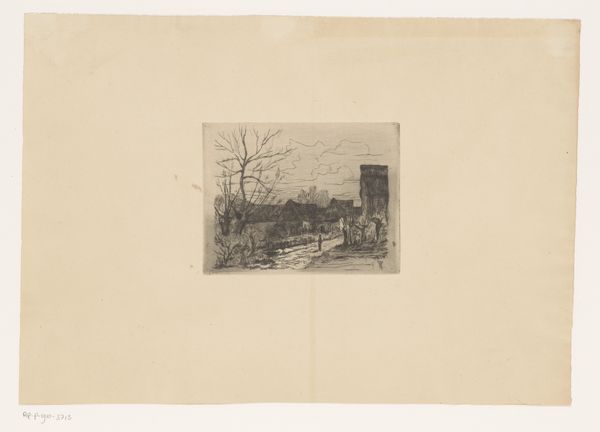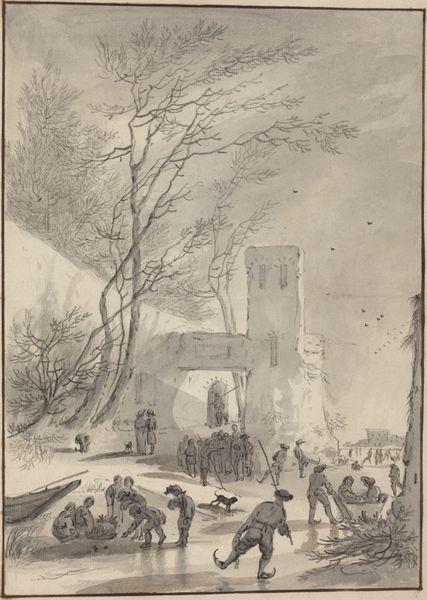
print, etching
#
ink drawing
# print
#
etching
#
landscape
#
etching
#
cityscape
#
history-painting
Dimensions: height 188 mm, width 494 mm
Copyright: Rijks Museum: Open Domain
Curator: Here we have Auguste André Lancon’s "Soldaten op een paardenkar tijdens de Frans-Duitse Oorlog", which translates to "Soldiers on a Horse Cart during the Franco-Prussian War." It's an etching from 1870. Editor: It immediately evokes a sense of desolation. The somber tones, the ruins… the image is powerfully melancholic, communicating more about defeat than strategic conflict. Curator: Exactly. Lancon wasn't just documenting events; he was critiquing the human cost of war, tapping into a broader societal anxiety. He used his art as a form of protest, holding space for those impacted and often overlooked in such narratives. Editor: The ruined buildings are prominent visual symbols here. They are almost like broken icons that once represented order, prosperity, perhaps national pride. The horse-drawn cart itself… it carries figures away from destruction. It reminds me of imagery related to displacement or even forced exodus that resonate across different eras. Curator: That's insightful. This piece allows us to examine the power dynamics during the Franco-Prussian War. Who were the combatants? Whose voices are amplified, and more critically, whose stories remain muted in mainstream historical records? This etching offers us an intersectional viewpoint. Editor: Consider the deliberate inclusion of smoke rising in the distance. It's a common symbolic representation of conflict. However, within the overall design here, it functions almost as an emotional trigger, inducing reflection in viewers even today about their own histories. It links shared pasts, provoking reflection about how they might relate to modern experiences. Curator: Absolutely, the historical weight informs current dialogues. By viewing the art as an extension of a discourse that still occurs in a world filled with conflict, Lancon helps expand that view and give some insight to its effect on contemporary issues. Editor: Thinking about these powerful themes and how he managed to elicit such pathos through a rather spare composition allows a fresh understanding of history, viewed from a contemporary scope. Curator: This piece really encourages us to consider these things together: how conflict affects everyone and also the visual symbols and how it helps shape the collective memory of the historical moments.
Comments
No comments
Be the first to comment and join the conversation on the ultimate creative platform.
